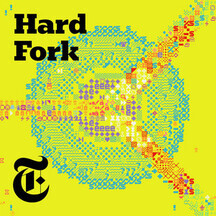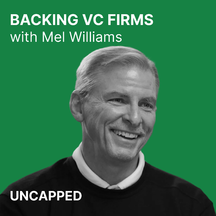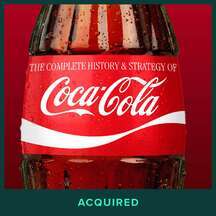Harmony Evans's Blog, page 6
November 26, 2025
5 Statement Sweaters That’ll Steal the Show – Fashion Gone Rogue
Sweater weather just got way more exciting. Anthropologie’s latest lineup of statement sweaters is cozy, fun, and made to stand out. This applies whether you’re sipping cider or heading out with friends. These knit sweaters are bold, playful, and totally outfit-making.
Feeling festive? The Maeve Carys Mock-Neck Sweater features a red base with mini dauschands galloping across it. It’s cute and unexpected.
Statement Sweaters Pilcro The Alani Cashmere Mock-Neck Sweater $148. Photo: Anthropologie
Pilcro The Alani Cashmere Mock-Neck Sweater $148. Photo: AnthropologieFor something celestial, the Pilcro Alani Cashmere Mock-Neck Sweater is sprinkled with stars and has just the right slouch to wear with jeans or tucked into a skirt.
 Porridge Jolene Pullover Sweater $128. Photo: Anthropologie
Porridge Jolene Pullover Sweater $128. Photo: AnthropologieAnd for cozy with a twist of humor, the Porridge Jolene Pullover Sweater features a skiing dog graphic that’s basically begging for compliments.
 Bel Kazan Icon Cardigan Sweater $168. Photo: Anthropologie
Bel Kazan Icon Cardigan Sweater $168. Photo: AnthropologieThe Bel Kazan Icon Cardigan Sweater is pure cool-girl energy, covered in martini glass graphics and perfect for layering over a dress or t-shirt.
 Anthropologie Long Sleeve Boatneck Tinsel Sweater $128. Photo: Anthropologie
Anthropologie Long Sleeve Boatneck Tinsel Sweater $128. Photo: AnthropologieThe Anthropologie Long-Sleeve Boatneck Tinsel Sweater brings major shine with a soft, glimmering texture and an off-the-shoulder vibe that feels effortless and glam.
Poco’s F8 Ultra is taking on the flagship market with help from Bose
Poco has officially stepped into true flagship territory, and the company isn’t doing it quietly.
At its global event in Bali, the brand unveiled the Poco F8 Ultra and F8 Pro, marking its strongest push yet into the premium segment. But the most unexpected headline is Poco’s new collaboration with audio heavyweight Bose, a partnership aimed at elevating the F8 Series beyond raw specs and into a genuinely premium user experience.
The Bose integration is the clearest signal that Poco wants to be taken seriously in the flagship space. The F8 Ultra benefits the most, introducing a triple-speaker 2.1-channel system co-developed with Bose. The tuning promises richer bass, clearer vocals and a noticeably wider soundstage than what you’d typically expect from a phone in this price category.
It even offers two sound profiles, Dynamic for fuller, more expressive bass and Balanced for cleaner vocal detail, giving the series an audio identity that stands out for all the right reasons.
Advertisement
The Poco F8 Ultra is positioned as the brand’s “true flagship,” and the spec sheet reflects that ambition. It runs on the Snapdragon 8 Elite Gen 5, backed by Poco’s VisionBoost D8 chipset, to deliver an AnTuTu score above 3.9 million. Poco claims it can sustain high-frame-rate gaming with Smart Frame Rate up to 120fps, AI-assisted super resolution and HDR enhancements.
The upgraded dual-layer IceLoop cooling system is designed to keep things stable under long gaming sessions, and the 6.9-inch HyperRGB display brings full RGB subpixel sharpness with lower power consumption.
 Image Credit (Trusted Reviews)
Image Credit (Trusted Reviews)Photography also receives a premium push. The F8 Ultra uses a 50MP Light Fusion 950 main sensor paired with OIS, a large 1/1.31-inch sensor size and a 1G+6P lens for improved clarity and better flare control. It’s backed by an impressive 5x periscope telephoto lens offering up to 20x zoom, with motion capture and a Super Moon Mode that automatically activates at high zoom.
The battery, at 6500mAh, is the largest ever in the F series and pairs with 100W wired and 50W wireless charging.
The best part? While it has an RRP of £749 – already affordable for a flagship phone – early bird pricing has taken it down to just £549 at Amazon. Considering the phone is brand-new today, that’s a pretty staggering offer.
Advertisement

 Save £200 on the brand new Poco F8 Ultra
Save £200 on the brand new Poco F8 UltraConsidering it’s less than a day old and offers true flagship specs, a £200 price drop on the F8 Ultra is an incredible thing to see.
For users who want something slightly more accessible, the Poco F8 Pro maintains the same HyperRGB display and Bose-tuned audio while scaling the hardware to a more balanced daily-driver experience.
It carries the year-old Snapdragon 8 Elite chipset, a 6210mAh battery with 100W charging, improved heat management and the first dedicated telephoto camera in a Poco Pro model. Its one-piece milled glass back and refined metal frame show Poco is taking the premium aesthetic just as seriously as performance.
Poco didn’t stop at phones. The Pad X1 and Pad M1 were also introduced, expanding the brand’s AIoT ecosystem. The Pad X1 leans toward gaming and productivity with a Snapdragon 7+ Gen 3 chip, a 3.2K display and a 144Hz refresh rate, while the Pad M1 targets entertainment with a larger 12.1-inch screen, quad speakers and a massive 12,000mAh battery.
Altogether, the Poco F8 launch signals a shift in the company’s identity. After years of being known for “flagship killer” devices focused purely on value, Poco now seems intent on competing directly with established flagship brands, not just in performance, but in design, audio and overall premium experience.
With Bose onboard and pricing likely to undercut rivals, the F8 Series could force bigger players to take the brand more seriously than ever.
Advertisement
BLUETTI launches huge Black Friday power deals with up to 56% off and a free AC300 for early B500K buyers
If you have been waiting for the right moment to invest in a backup power system or upgrade your off-grid setup, BLUETTI’s Black Friday sale has arrived with some of the biggest discounts the brand has offered this year. Running until 1 December, you can save up to 56% on portable power stations, solar generators and home batteries, with one of the headline offers being a free AC300 unit for the first 450 buyers of the new B500K battery.
Top BLUETTI Black Friday Power Station DealsElite 200 V2A strong choice for holiday travel or home emergencies, the Elite 200 V2 offers a 2,073 Wh battery and a 2,600 W inverter with a 3,900 W peak for high-demand appliances. Despite the muscle, it is 40% smaller than the AC200P. TurboBoost Charging takes it from 0% to 80% in 50 minutes, while the automotive-grade LiFePO₄ battery provides over 6,000 cycles. Noise levels stay incredibly low at just 16 dB.
Elite 100 V2Building on the AC180, the Elite 100 V2 packs 1,024 Wh, 1,800 W output and a 2,700 W lifting mode. It weighs only 11.5 kg and is significantly smaller and lighter than its predecessor. With nine outlets and doubled solar charging at 1,000 W, it is ideal for campers and van-lifers. It also includes 4,000 cycles, app control and a 10 ms UPS for sensitive devices.
Apex 300One of the most flexible systems BLUETTI offers, starting at 2,764.8 Wh and 3,840 W output. It scales up massively to 54 kWh and 11.52 kW for whole-home backup. Time of Use mode helps households cut electricity costs by storing cheaper power. It charges from empty to full in 65 minutes and uses only 20 W for self-consumption. Paired with the SolarX 4K and Hub D1, it can take in up to 19.2 kW of solar.
Elite 30 V2A lightweight 4.3 kg option for small setups, home offices or minimalist camping. With 288 Wh capacity and 600 W output (1,500 W surge), it supports laptops, consoles and mini-fridges. The 10 ms UPS makes it a reliable pick for protecting computers during outages.
New B500K Expansion Battery: a smarter, cheaper way to upgrade your storageThe newest launch in BLUETTI’s line-up is the B500K, a 5,120 Wh expansion battery built for users who want more storage without replacing their whole setup. It works seamlessly with current and future BLUETTI power stations, including the AC300, Apex 300, AC500, AC200L and AC200MAX, and can be mixed with other BLUETTI battery modules.
Advertisement
More Black Friday perksBLUETTI is also running flash sales, tripled BLUETTI Bucks, lucky wheel prizes and an extra 5% discount with the code BLUETTITR
As a leader in clean energy solutions, BLUETTI continues to support both home and off-grid users, with over 3.5 million customers across more than 110 countries.
Uber starts deploying fully driverless WeRide robotaxis in Abu Dhabi, after launching its robotaxi service with safety drivers in the UAE in December 2024 (Andrew J. Hawkins/The Verge)
[trading places]:
Emily Zheng of Pitchbook
 | VC Secondaries Hit $95B
| VC Secondaries Hit $95B  | Ramp $32B
| Ramp $32B 
a very bad podcast about broken unicorns & busted carry hosted by dave mcclure and aman verjee
Subscribe to [trading places].

Hard Fork:
The Interview: How Wikipedia Is Responding to the Culture Wars
The future is already here. Each week, journalists Kevin Roose and Casey Newton explore and make sense of the latest in the rapidly changing world of tech.
Subscribe to Hard Fork.

Uncapped with Jack Altman:
Mel Williams from TrueBridge
Conversations with people I admire about things I’m genuinely interested in.
Subscribe to Uncapped with Jack Altman.

Invest Like the Best:
Martín Escobari – Inside General Atlantic
The leading destination to learn about business and investing. We do this by showcasing exceptional talent and ideas.
Subscribe to Invest Like the Best.

Grit:
She Sold Her Startup for $500 Million, Here’s Her Next Idea
Grit explores what it takes to create, build and scale world-class organizations.
Subscribe to Grit.

Acquired:
Coca-Cola
Learn the playbooks that built the world’s greatest companies – and how you can apply them as a founder, operator, or investor.
Subscribe to Acquired.
Apple is set to overtake Samsung as the world’s largest smartphone maker for the first time since 2011, lifted by the success of iPhone 17 models (Vlad Savov/Bloomberg)
[trading places]:
Emily Zheng of Pitchbook
 | VC Secondaries Hit $95B
| VC Secondaries Hit $95B  | Ramp $32B
| Ramp $32B 
a very bad podcast about broken unicorns & busted carry hosted by dave mcclure and aman verjee
Subscribe to [trading places].

Hard Fork:
The Interview: How Wikipedia Is Responding to the Culture Wars
The future is already here. Each week, journalists Kevin Roose and Casey Newton explore and make sense of the latest in the rapidly changing world of tech.
Subscribe to Hard Fork.

Uncapped with Jack Altman:
Mel Williams from TrueBridge
Conversations with people I admire about things I’m genuinely interested in.
Subscribe to Uncapped with Jack Altman.

Invest Like the Best:
Martín Escobari – Inside General Atlantic
The leading destination to learn about business and investing. We do this by showcasing exceptional talent and ideas.
Subscribe to Invest Like the Best.

Grit:
She Sold Her Startup for $500 Million, Here’s Her Next Idea
Grit explores what it takes to create, build and scale world-class organizations.
Subscribe to Grit.

Acquired:
Coca-Cola
Learn the playbooks that built the world’s greatest companies – and how you can apply them as a founder, operator, or investor.
Subscribe to Acquired.
Japanese memory chipmaker Kioxia’s stock falls 14%+ after a Bain Capital-backed entity sold $2.1B worth of shares at a discount, stoking AI valuation concerns (Bloomberg)
[trading places]:
Emily Zheng of Pitchbook
 | VC Secondaries Hit $95B
| VC Secondaries Hit $95B  | Ramp $32B
| Ramp $32B 
a very bad podcast about broken unicorns & busted carry hosted by dave mcclure and aman verjee
Subscribe to [trading places].

Hard Fork:
The Interview: How Wikipedia Is Responding to the Culture Wars
The future is already here. Each week, journalists Kevin Roose and Casey Newton explore and make sense of the latest in the rapidly changing world of tech.
Subscribe to Hard Fork.

Uncapped with Jack Altman:
Mel Williams from TrueBridge
Conversations with people I admire about things I’m genuinely interested in.
Subscribe to Uncapped with Jack Altman.

Invest Like the Best:
Martín Escobari – Inside General Atlantic
The leading destination to learn about business and investing. We do this by showcasing exceptional talent and ideas.
Subscribe to Invest Like the Best.

Grit:
She Sold Her Startup for $500 Million, Here’s Her Next Idea
Grit explores what it takes to create, build and scale world-class organizations.
Subscribe to Grit.

Acquired:
Coca-Cola
Learn the playbooks that built the world’s greatest companies – and how you can apply them as a founder, operator, or investor.
Subscribe to Acquired.
Q&A with Sportable co-founders Dugald Macdonald and Peter Husemeyer on their sensor-based sports tech that generates data for teams, leagues, and broadcasters (Samuel Agini/Financial Times)
[trading places]:
Emily Zheng of Pitchbook
 | VC Secondaries Hit $95B
| VC Secondaries Hit $95B  | Ramp $32B
| Ramp $32B 
a very bad podcast about broken unicorns & busted carry hosted by dave mcclure and aman verjee
Subscribe to [trading places].

Hard Fork:
The Interview: How Wikipedia Is Responding to the Culture Wars
The future is already here. Each week, journalists Kevin Roose and Casey Newton explore and make sense of the latest in the rapidly changing world of tech.
Subscribe to Hard Fork.

Uncapped with Jack Altman:
Mel Williams from TrueBridge
Conversations with people I admire about things I’m genuinely interested in.
Subscribe to Uncapped with Jack Altman.

Invest Like the Best:
Martín Escobari – Inside General Atlantic
The leading destination to learn about business and investing. We do this by showcasing exceptional talent and ideas.
Subscribe to Invest Like the Best.

Grit:
She Sold Her Startup for $500 Million, Here’s Her Next Idea
Grit explores what it takes to create, build and scale world-class organizations.
Subscribe to Grit.

Acquired:
Coca-Cola
Learn the playbooks that built the world’s greatest companies – and how you can apply them as a founder, operator, or investor.
Subscribe to Acquired.
November 25, 2025
Pony AI’s Hong Kong-listed shares rose 6.7% after it said its Guangzhou operations had broken even per car, as it targets a 3,000+ global robotaxi fleet in 2026 (Linda Lew/Bloomberg)
[trading places]:
Emily Zheng of Pitchbook
 | VC Secondaries Hit $95B
| VC Secondaries Hit $95B  | Ramp $32B
| Ramp $32B 
a very bad podcast about broken unicorns & busted carry hosted by dave mcclure and aman verjee
Subscribe to [trading places].

Hard Fork:
The Interview: How Wikipedia Is Responding to the Culture Wars
The future is already here. Each week, journalists Kevin Roose and Casey Newton explore and make sense of the latest in the rapidly changing world of tech.
Subscribe to Hard Fork.

Uncapped with Jack Altman:
Mel Williams from TrueBridge
Conversations with people I admire about things I’m genuinely interested in.
Subscribe to Uncapped with Jack Altman.

Invest Like the Best:
Martín Escobari – Inside General Atlantic
The leading destination to learn about business and investing. We do this by showcasing exceptional talent and ideas.
Subscribe to Invest Like the Best.

Grit:
She Sold Her Startup for $500 Million, Here’s Her Next Idea
Grit explores what it takes to create, build and scale world-class organizations.
Subscribe to Grit.

Acquired:
Coca-Cola
Learn the playbooks that built the world’s greatest companies – and how you can apply them as a founder, operator, or investor.
Subscribe to Acquired.
Estranged wife in Lopez corruption case accepts plea
Robin Severance-Lopez, the estranged wife of Marcos Lopez, the former Sheriff at the heart of a casino gambling scheme case, has accepted a plea deal.
This news comes alongside a former associate of Lopez, Krishna Kumar Deokaran, who changed their plea to guilty after charges against them were reduced.
Lopez’s corruption case continuesAs we reported, the case into the alleged corruption and gambling ring centred around the office of Lopez, and a rumoured $21.6 million in embezzled funds, has continued to gain momentum.
Severance-Lopez was arrested in the summer of 2025 on a felony charge of conspiracy to use investment proceeds from racketeering.
Robin Severance-Lopez, the estranged wife of the now suspended sheriff of Osceola County, Marcos Lopez, was arrested by @HSITampa on state charges for conspiracy to commit racketeering. Lopez, the now suspended sheriff, was arrested June 5 following an investigation into a… pic.twitter.com/N6525QwBAs
— HSI Tampa (@HSITampa) June 23, 2025
A $400,000 bond was set for Lopez, as state prosecutors had designated her as a key financial facilitator in the case.
Assistant Statewide Prosecutor Colleen Monroe alleged: “She helped to facilitate the movement of illicit money and receipt of illicit payments from other co-conspirators to Lopez, which is believed to have reached at least $600,000 to $700,000.”
Now, Severance-Lopez has accepted a plea deal with the authorities, agreeing to 24 months of probation.
Which means that her custodial sentence will be off the table, but she has acknowledged, says Fox45 Orlando, that she gave false and misleading information on her bail application and to a money laundering charge.
Deokaran changes plea to guiltyLocal police held Deokaran for his connection to Marcos Lopez in October 2025, and he was charged with money laundering. He has now pleaded to a lesser part in the money laundering, and his sentence has been deferred.
Alleged gambling ringleader for Osceola County Sheriff Marcos Lopez faces money laundering charge https://t.co/TJyBricoHU
— WFTV Channel 9 (@WFTV) October 28, 2025
Deokaran was seen as a facilitator and was described as part of the two-hundred and fifty page affidavit as the person “who stood at the helm” of the gambling operation allegedly under the protection of former Sheriff Lopez.
In the document, it was recorded that Deokaran paid Lopez protection money in the region of $600,000 and $700,000 since 2020. He also boasted to federal agents of his ability to process millions of dollars per week from illegal casino locations.
Guilty pleas stack up in Lopez caseWe reported that Lopez’s actions were found to span multiple jurisdictions and across five separate venues running illegal betting and casino activities. Prosecutors labelled his actions as “an organized criminal conspiracy affecting two or more judicial circuits of the State of Florida.”
Since Lopez’s arrest, several individuals tied to his office have entered guilty pleas. These include Ying “Kate” Zhang, Sharon Fedrick, Sheldon Wetherholt, and Carol Cote, as well as Severance-Lopez and Deokaran.
Featured image: Fox 35 Orlando screenshot via YouTube
the share of downloads of Chinese-made open AI models rose to 17% in the past year, surpassing US developers’ 15.8% share, a first (Melissa Heikkilä/Financial Times)
[trading places]:
Emily Zheng of Pitchbook
 | VC Secondaries Hit $95B
| VC Secondaries Hit $95B  | Ramp $32B
| Ramp $32B 
a very bad podcast about broken unicorns & busted carry hosted by dave mcclure and aman verjee
Subscribe to [trading places].

Hard Fork:
The Interview: How Wikipedia Is Responding to the Culture Wars
The future is already here. Each week, journalists Kevin Roose and Casey Newton explore and make sense of the latest in the rapidly changing world of tech.
Subscribe to Hard Fork.

Uncapped with Jack Altman:
Mel Williams from TrueBridge
Conversations with people I admire about things I’m genuinely interested in.
Subscribe to Uncapped with Jack Altman.

Invest Like the Best:
Martín Escobari – Inside General Atlantic
The leading destination to learn about business and investing. We do this by showcasing exceptional talent and ideas.
Subscribe to Invest Like the Best.

Grit:
She Sold Her Startup for $500 Million, Here’s Her Next Idea
Grit explores what it takes to create, build and scale world-class organizations.
Subscribe to Grit.

Acquired:
Coca-Cola
Learn the playbooks that built the world’s greatest companies – and how you can apply them as a founder, operator, or investor.
Subscribe to Acquired.



